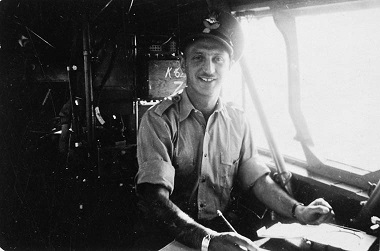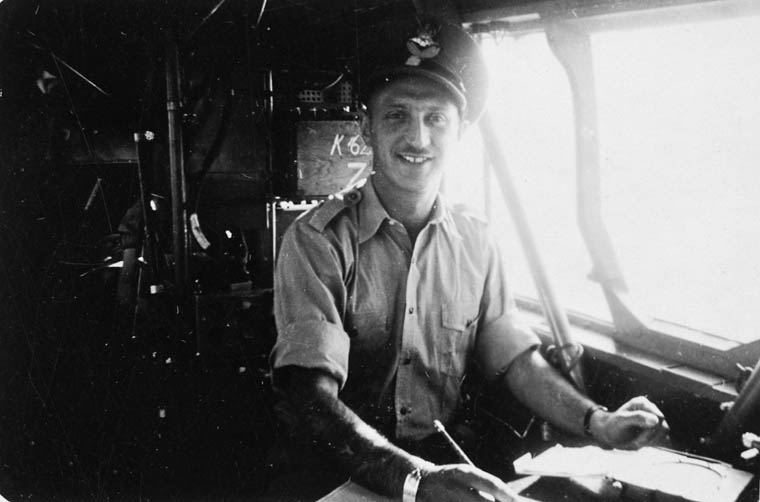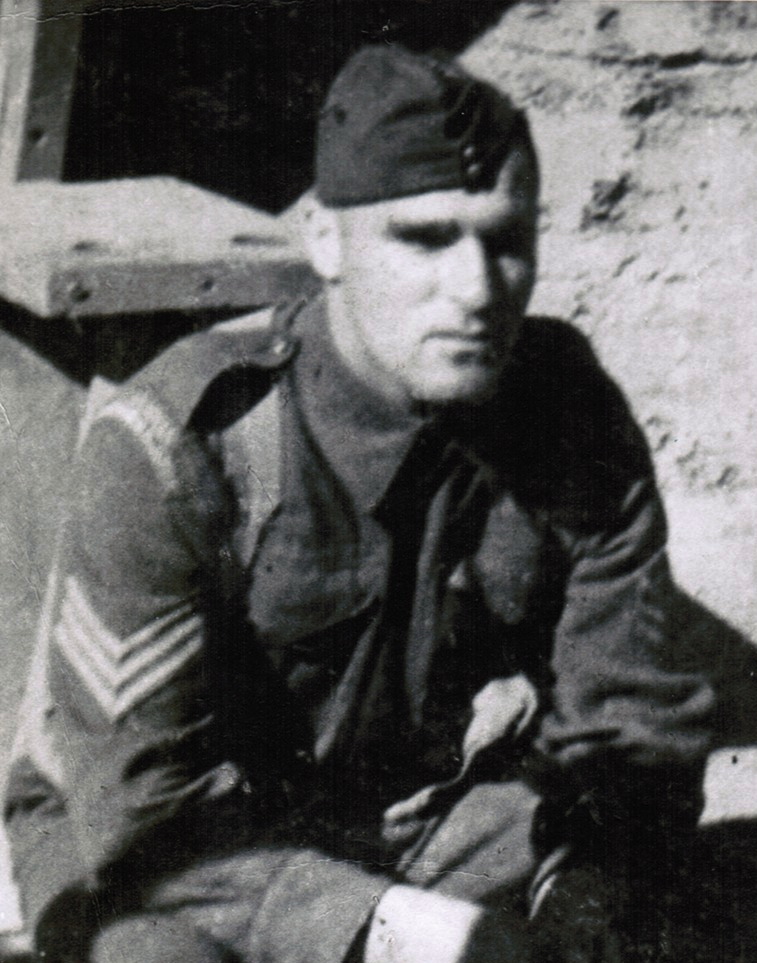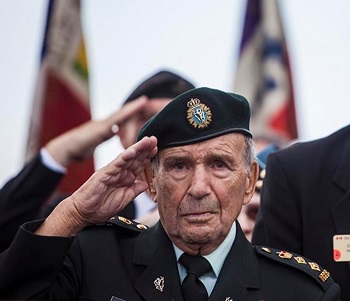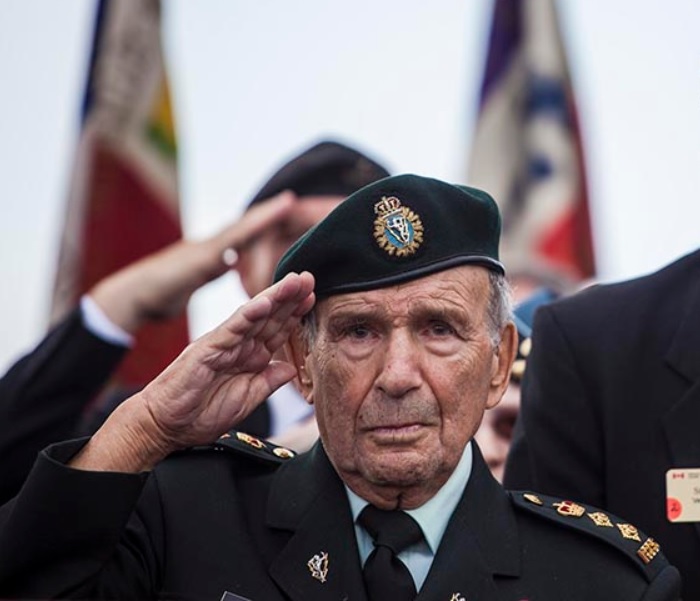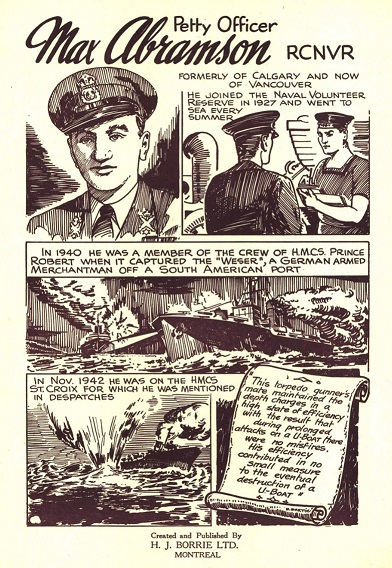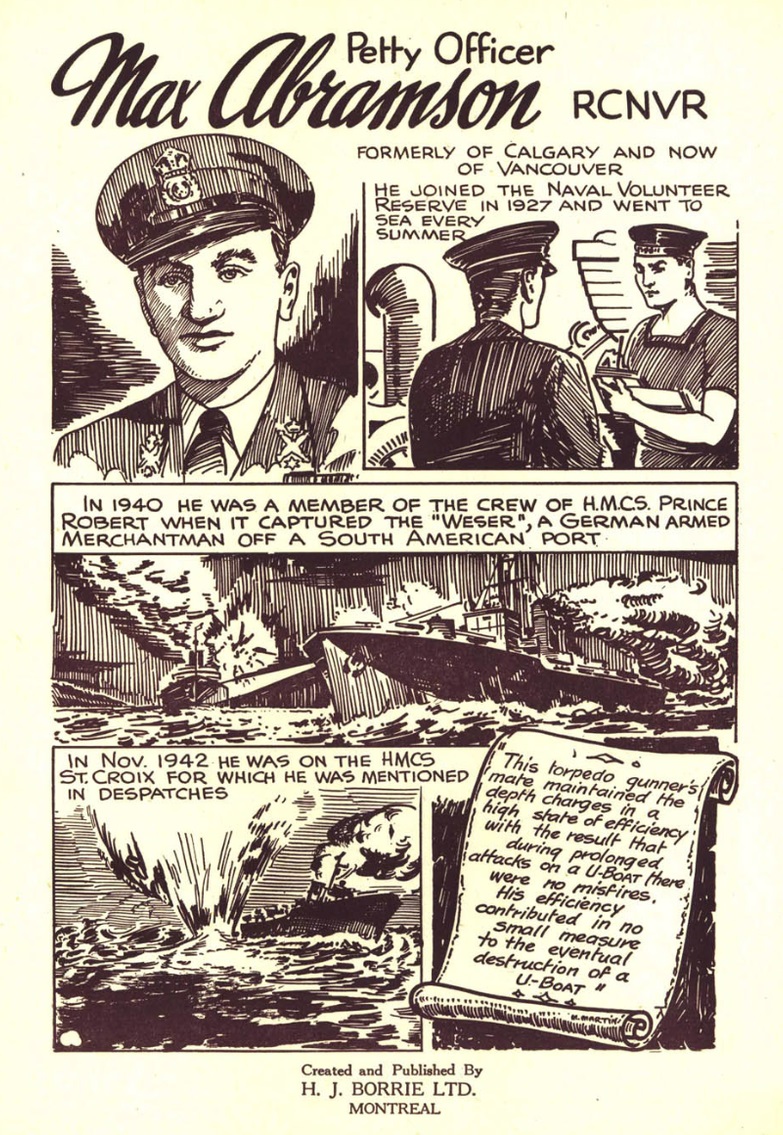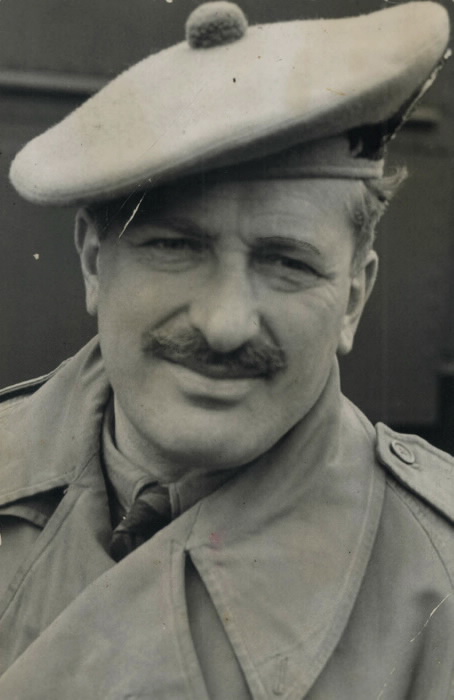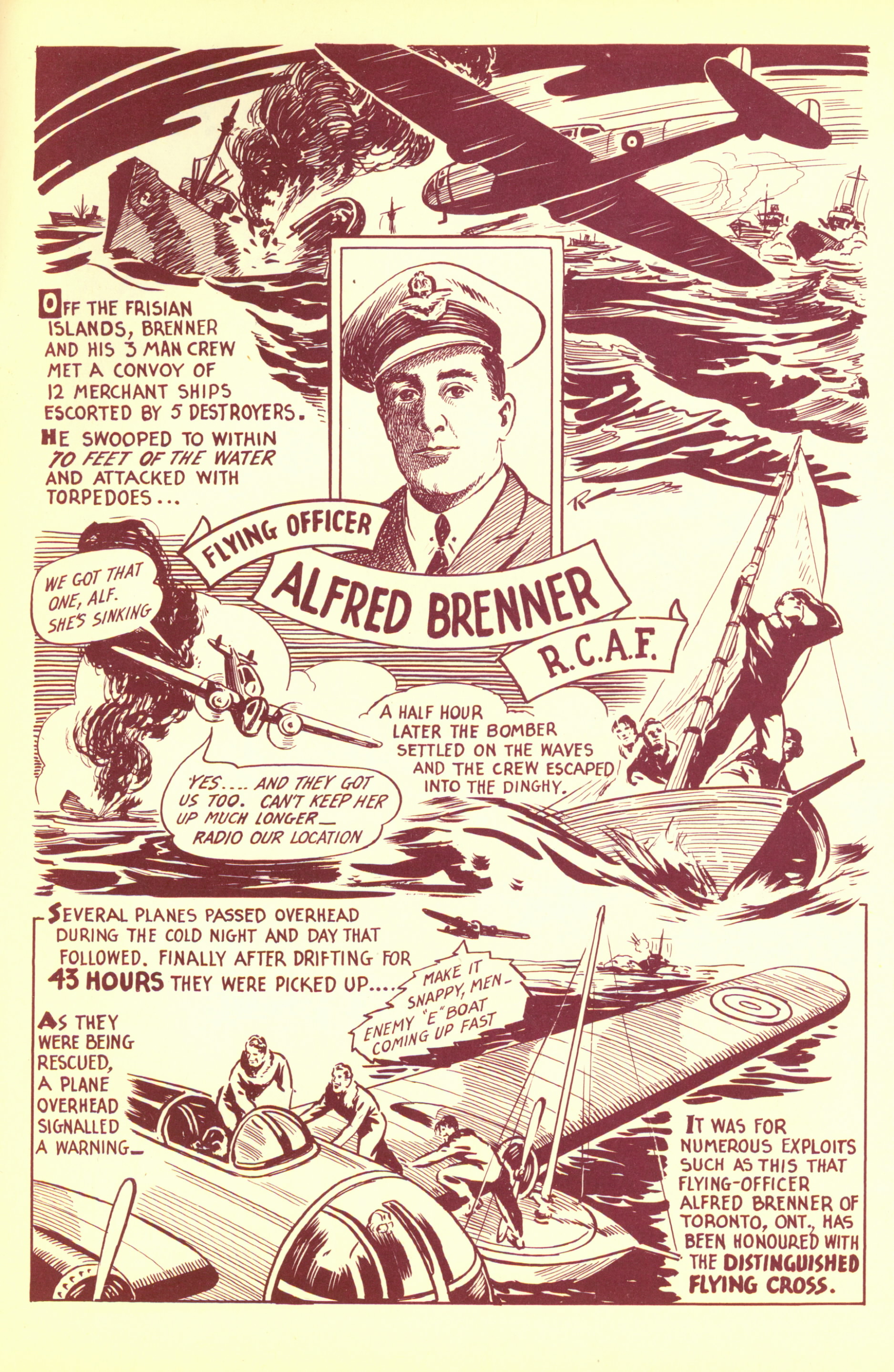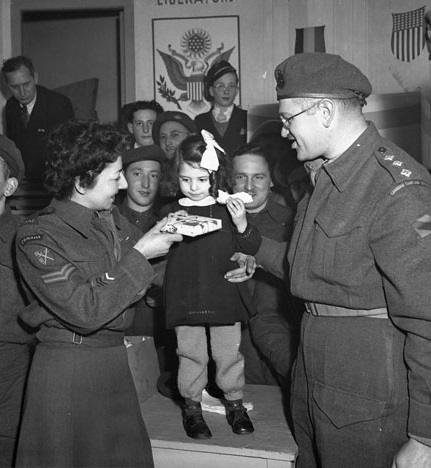Profiles of Courage
Index
Sydney Shulemson
Sydney Shulemson was born in Montréal in 1915. A student at McGill University at the outbreak of the Second World War, he soon chose to set aside his studies to enlist in the Royal Canadian Air Force. Shulemson would train as a pilot at British Commonwealth Air Training Plan bases in Ontario and Prince Edward Island before being awarded his wings in 1942 and joining Royal Canadian Air Force No. 404 Squadron in northeastern Scotland.
Flight Lieutenant Shulemson’s squadron was part of Coastal Command, tasked with finding and attacking enemy forces in the seas off Western Europe. He soon proved to be an exceptionally brave and skilled airman, being awarded the Distinguished Service Order in 1944 for a mission along the coast of occupied Norway that saw the pilot evade heavy fire as he flew his Beaufighter fighter-bomber at the head of a 12-plane attack that sank a German minesweeper and damaged four other vessels.
Shulemson’s courage in action and the innovative techniques he helped develop to destroy enemy shipping in the North Sea were most impressive, and he was also awarded the Distinguished Flying Cross in 1945. His leadership was greatly valued, with the officer remarking after the war that, “The guys on my squadron would follow me into hell and back, they had a lot of faith in what I could do.”
He ended his combat service credited with destroying at least 12 enemy vessels during the course of some 50 missions. Because of his special skills, Shulemson then served as an instructor for the rest of the conflict. He was the most highly decorated Jewish Canadian serviceman of the Second World War.
Samuel Moses “Moe” Hurwitz
Samuel Moses (Moe) Hurwitz was born in 1919, one of 13 children of a Jewish family that had immigrated to Lachine, Quebec. An exceptional hockey player, he nevertheless turned down a tryout with the Boston Bruins in the early days of the Second World War, remarking, “There's no time to play hockey when millions of my brothers are getting killed in Europe.” Instead Hurwitz joined the Canadian Army in June 1940 and would serve in the armoured corps. He harboured no illusions of what he was potentially signing up for, grimly telling a brother before he shipped out overseas, “I won’t be coming back. I am going to be killed.”
Sergeant Hurwitz trained in Canada for two years and spent another two years in the United Kingdom before his unit, the Canadian Grenadier Guards (later renamed the 22nd Armoured Regiment), would finally get a chance to go into combat. Landing in France during the Battle of Normandy in July 1944, they were thrown into action in the Allied push south from Caen towards Falaise. From the beginning, the fiery sergeant made courage his calling card like when he jumped from his tank, which he had nicknamed “Geraldine,” to flush out enemy snipers in a German-held French village. Hurwitz followed up that courageous act of bravado during the Battle of the Scheldt when he single-handedly rushed a German machine-gun position in a Dutch farmhouse, knocking out the enemy resistance and taking 23 prisoners.
Sergeant Hurwitz would earn both the Military Medal and the Distinguished Conduct Medal for his heroism during the war but lost his life in late October 1944 as a result of an attack in southern Holland. He was shot in the back and captured, dying of his wounds in a German field hospital a few days later. Sergeant Hurwitz was only 25 years old and is buried in the Bergen-Op-Zoom Canadian War Cemetery in the Netherlands.
David Lloyd Hart
David Lloyd Hart of Montréal joined the Royal Canadian Corps of Signals during the Second World War and would see action in the Dieppe Raid on August 19, 1942. Hart, 25 years old at the time, was a radio operator aboard a tank landing craft that was to go ashore at Dieppe. His ship was hit by the enemy off the beach, however, and the men were trapped on board as the landing craft came under additional fire.
With the Allied landing forces suffering terrible losses in the raid, orders were relayed from the Allied command ship HMS Calpe to evacuate the beaches an hour earlier than had been planned. But two Canadian infantry units that had come ashore at the nearby seaside village of Pourville, the Cameron Highlanders of Canada and the South Saskatchewan Regiment, did not seem to have received this message to pull back. Sergeant Hart got permission from the officers aboard the command ship to take over the airwaves to try to reach them himself. He succeeded and enabled the rescue of about a hundred Canadian soldiers. Hart would safely return to England, but it would be a harrowing crossing of the English Channel as his damaged landing craft was repeatedly attacked by German dive bombers while being towed to safety.
Hart, who would go on to become an officer later in the war, was awarded the Military Medal for his actions during the Dieppe Raid. He would later be named the honourary colonel of the 34 Signal Regiment.
Max Abramson
Max Abramson of Calgary was the son of a Romanian immigrant and grew up on the prairies and in northern Ontario. Despite coming of age far from the sea, he began working on fuel tankers that sailed out of Vancouver and then joined the Royal Canadian Navy Volunteer Reserve in the 1920s. Abramson was an able seaman when the Second World War erupted in 1939 and soon entered active service. He would find himself serving as a senior enlisted seaman in the torpedo room of the destroyer HMCS St. Croix on the dangerous North Atlantic run.
On July 23, 1942, while escorting 33 Allied merchant ships back to Canada after a supply run to Londonderry, Northern Ireland, the convoy came under attack by a large “wolfpack” of German U-boats some 800 kilometres east of Newfoundland. The St. Croix spotted an enemy submarine and quickly closed on it. After three depth charge runs, their target was destroyed.
Petty Officer Abramson’s stalwart service during this difficult convoy crossing and his contributions to the sinking of the German U-boat, our navy’s third successful destruction of an enemy sub during the Second World War’s Battle of the Atlantic, would earn him a Mention in Dispatches later that year. His citation stated: “This torpedo gunner’s mate maintained the depth charges in a high state of efficiency with the result that during prolonged attacks on a U-boat there were no misfires. His efficiency contributed in no small measure to the eventual destruction of a U-boat.”
David Croll
David Croll was born in Russia and came to Canada with his family as a young boy. He was a lawyer in his adoptive hometown of Windsor, Ontario, and then entered politics in the 1930s, becoming the mayor of Windsor and the first Jewish provincial cabinet minister in Ontario. When the Second World War broke out in September 1939, this prominent Windsor citizen immediately sought to join the Canadian Army. His hometown infantry unit, the Essex Scottish Regiment, initially seemed reluctant to recruit Jewish volunteers but Mayor Croll helped break down the barriers and enlisted. Before his wartime duties took him away, he would proudly wear his military uniform while doing city council business.
His motivation was both to serve and to be a symbol of the Jewish Canadian response in the Second World War. Croll started at the bottom of the ranks, as a private, and persevered in the face of anti-Semitic attitudes to go overseas to train in reconnaissance techniques. He was commissioned as an officer in early 1941 and went on to help develop training resources for dispatch riders. Continuing to rise through the ranks, he eventually became a lieutenant colonel commanding the Oxford Rifles before the war came to an end.
Croll returned home and resumed his political career, later being the first Jewish person appointed to the Senate of Canada. His wartime service had a great impact on him. As he later recounted, “I can think of no greater honour than to serve your country in the time of need. I felt I belonged. It was my country. I had fought for it.”
Alfred Brenner
Alfred Brenner of Toronto joined the Royal Canadian Air Force during the Second World War. He served as a pilot with Coastal Command, which was tasked with attacking German shipping. On February 18, 1943, he was flying a Hampden bomber when the crew spotted an enemy convoy in the North Sea, off the coast of the Netherlands’ Frisian Islands. Consisting of a dozen merchant ships being escorted by five German destroyers, it made for a tempting target. The Canadian bomber went on the attack, dropping to just above the wave tops as it made its approach to launch a torpedo that would successfully hit a 5,000-ton enemy vessel.
“All hell broke loose. Every ship in the convoy began firing at us,” Squadron Leader Brenner later recounted. His warplane was badly damaged and would not be able to make it back to England. The crew sent an SOS message and bailed out over the water as their plane went down. They were able to get into a life raft but were left floating in dangerous waters with few resources. Remarkably, they were able to send a message to home base using a messenger pigeon they had taken from their stricken plane. After two long days, they were picked up in a daring rescue mission.
Brenner’s courage and dedication while serving in Coastal Command would not go unnoticed as he was awarded the Distinguished Flying Cross by King George VI at Buckingham Palace in September 1943. Brenner’s medal citation would pay tribute to his remarkable service by noting, “Throughout his tour of operations, this officer has displayed the greatest keenness and devotion to duty.”
Miriam “Mimi” Freedman
Miriam “Mimi” Freedman (she would later take the married name Hart) was born in Montréal, part of a prominent Jewish family that could trace its roots in Canada back almost two centuries. Her own immediate family would immigrate to Europe after the First World War, first arriving in Belgium before eventually settling in the United Kingdom. Eager to do her part upon the outbreak of the Second World War in September 1939, the young woman joined the London Ambulance Service in England in the opening weeks of the conflict. She spent three years as an ambulance driver, including during the worst days of the Blitz when German bombers pounded Britain with almost nightly bombing raids, before joining the Canadian Women’s Army Corps in 1943 as a driver attached to the Canadian Military Headquarters.
Staff Sergeant Freedman would find herself close to the front lines as she landed in Normandy two months after D-Day—one of the first Canadian servicewomen to arrive on the continent—and followed the advancing Canadian troops through Northwest Europe over the course of the rest of the war. Although she was a driver, Freedman was sometimes called on to use her impressive language skills (she was fluent in English, French, Dutch, German and Flemish) to talk to the local people of the countries being liberated, as well as to help interrogate captured German prisoners.
Freedman earned a Mention in Dispatches for her impressive military service and is believed to be the only Jewish Canadian enlisted woman to be decorated for bravery during the Second World War.
- Date modified:
